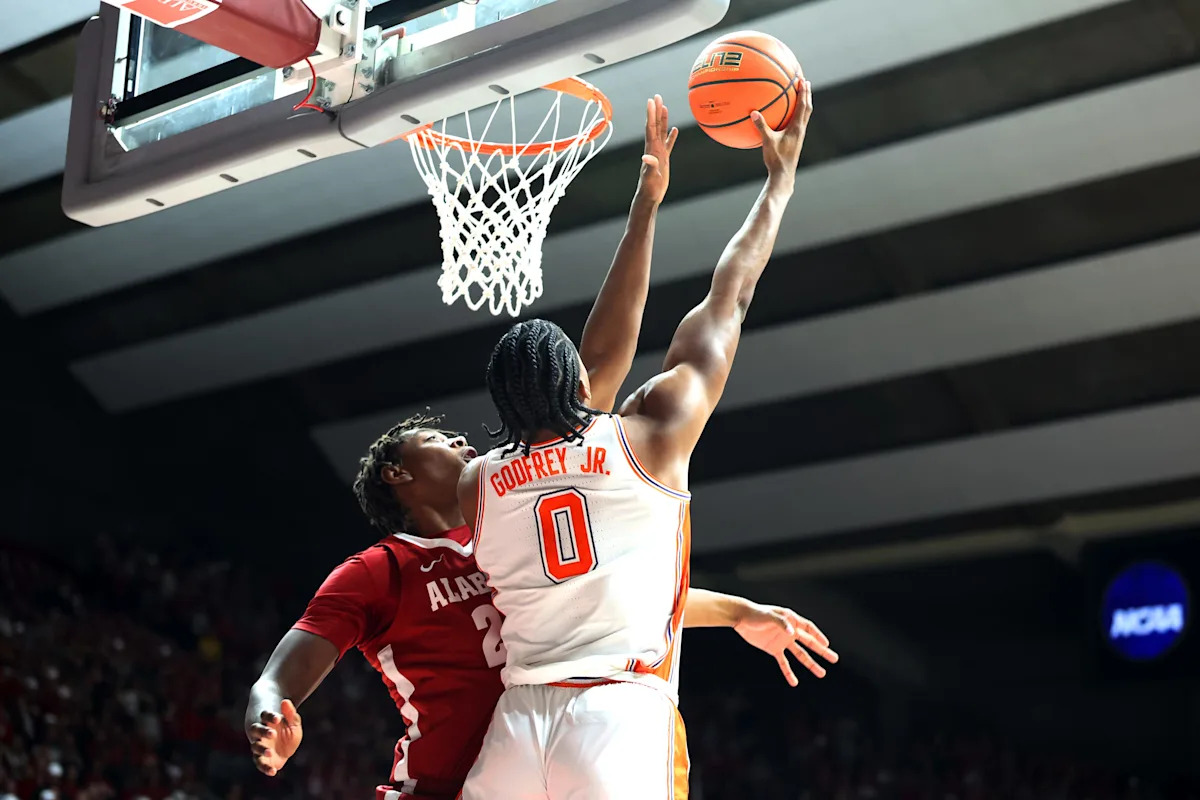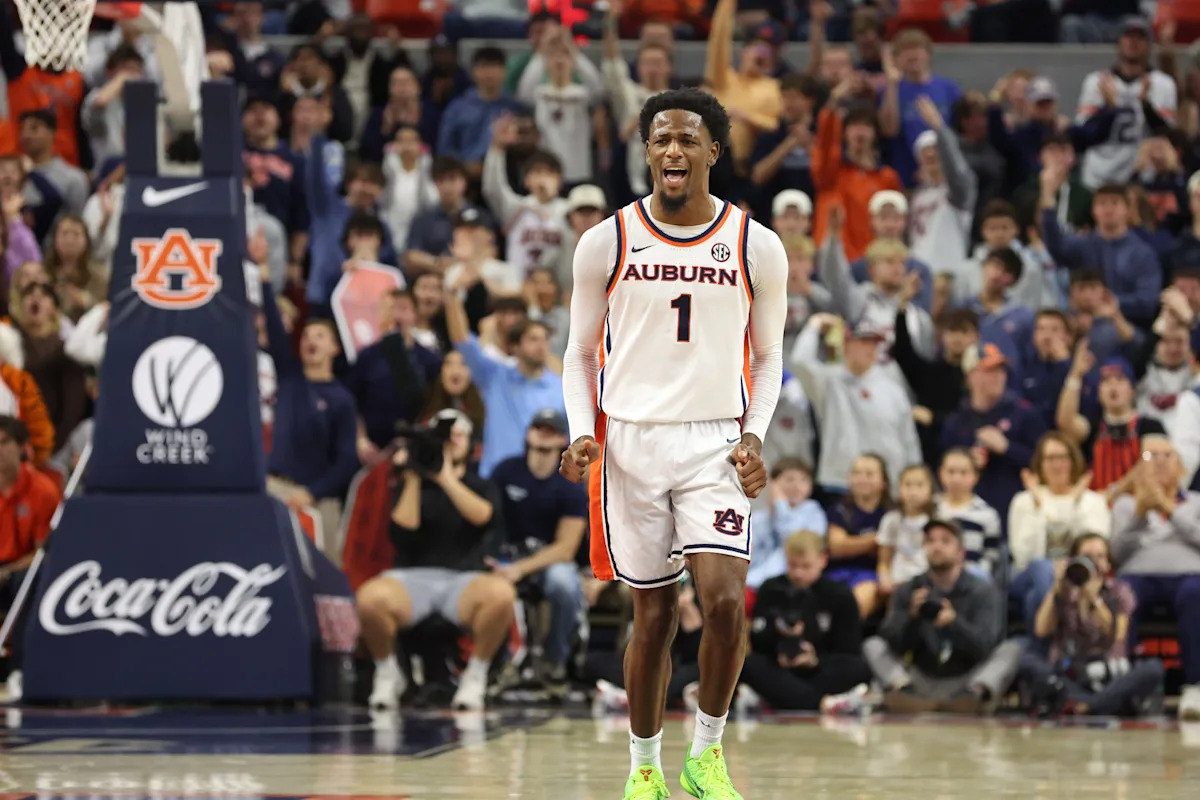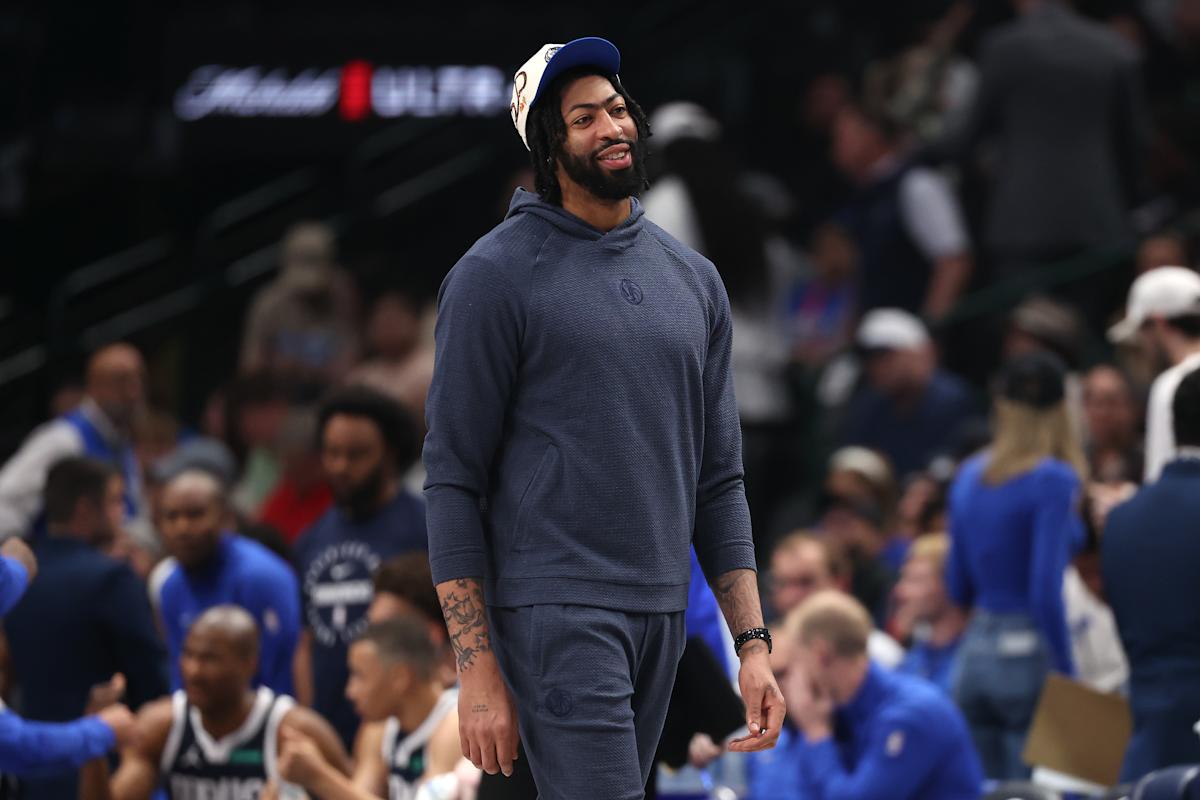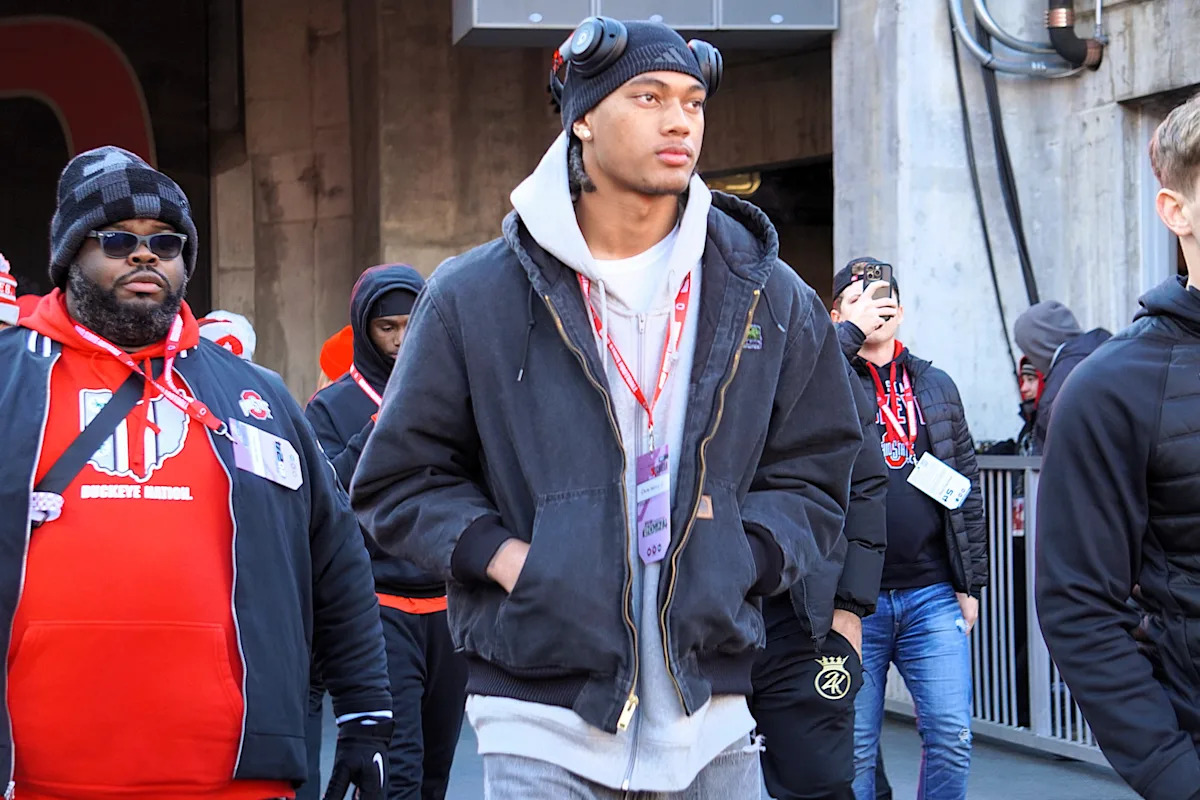The Athletic has live coverage of 2025 Men’s March Madness
After one round of play, our brackets are coated in chalk. Only three teams seeded 11th or higher remain. No team seeded 13th or worse won a game.
Regardless, our upset-predicting model, Slingshot, still has a job to do. So it’s on to the second round, and the search for different kinds of upsets. Can a 9-seed take out a top-seed? What about a No. 2 vs. No. 7 contest? We’ve already examined Saturday’s matchups. Now it’s on to Sunday.
No. 2 Michigan State Spartans vs. No. 10 New Mexico Lobos
Upset Chance: 21.3 percent
Our model sees Michigan State as roughly 11 points per 100 possessions better than New Mexico. The Lobos, then, need to find a way to generate more possessions to make up for that edge. So let’s talk about turnovers.
The Lobos force opponents to cough the ball up on 20.4 percent of possessions, 32nd in the country. That stands out as an even bigger edge because they also take great care of the ball on offense (15.7 percent). The Spartans, by contrast, give it up more often (16.6 percent) than they take it away (16.4 percent). If New Mexico can match what UCLA did in a two-point win over Sparty in February — the Bruins won the turnover battle 16-3 — then it can win.
But that’s a lot to ask, especially against the country’s No. 5 defense in adjusted efficiency. New Mexico doesn’t shoot particularly well, so its best chance to score will be in transition. Thankfully, the Lobos play at the country’s sixth-fastest tempo. Normally, that’s the wrong strategy for underdogs (fewer possessions are better if you’re less talented), but in this case, playing every possession against Michigan State’s half-court defense would be a death sentence.
No. 4 Maryland Terrapins vs. No. 12 Colorado State Rams
Upset Chance: 20.4 percent
The Terps authored one of the more impressive performances of the first round, dismantling Grand Canyon, 81-49. (That was also, quietly, one of Slingshot’s better calls. Grand Canyon’s moneyline odds of +360 implied a 21.7 percent chance of winning; we pegged it at just 12.4 percent.)
The Rams should offer a greater challenge. Fresh off their “non-upset” win over fifth-seeded Memphis (Colorado State was actually favored), the Rams have a shooter’s chance to knock off the Terps. A 3-point shooter, that is. Since the Rams don’t employ most of the possession-building tactics preferred by successful killers of the past, they will have to rely on their one area of extreme variance: long-range shooting. For the season, they’ve taken 43 percent of their shots from downtown (making 36.6 percent). Against Memphis, they increased that focus, taking 30 of their 57 shots from 3-point range (and making 11).
Maryland excels in all sorts of analytic areas and is particularly adept at combating Colorado State’s greatest strength. The Terps limit both 3-point attempts (only 36 percent of opponents’ shots) and accuracy (30 percent). So when you tune in on Sunday, focus on the arc. That’s where the game will be decided.
No. 1 Duke Blue Devils vs. No. 9 Baylor Bears
Upset Chance: 17.2 percent
There aren’t a lot of weaknesses in the Blue Devils’ arsenal. They’ve lost one game since late November, won the ACC Tournament without Cooper Flagg in the final and boast the second-highest net rating in the history of KenPom. But our model gives Baylor a fighting chance.
Why? Well, the Bears’ strengths are the ones you want to see from an underdog: offensive rebounding (35.8 percent, 20th in the nation), forcing turnovers (19 percent, 81st) and playing slow (320th in tempo). Duke, meanwhile, has one potential issue that hasn’t manifested much this season but could be a problem in a one-and-done setting: They shoot more 3s than you’d like to see from a safe giant. They take more than 45 percent of their shots from deep, and while they shoot them at a sizzling 38 percent clip, that does introduce variance into their performance.
There are also a couple of non-model factors to watch. First, you’ll hear plenty about Baylor’s Jeremy Roach, who played four years at Duke and certainly won’t be intimidated. Ditto for big man Norchad Omier, who faced Duke four times at Miami. Second, while Flagg’s injury garnered outsized attention, Duke lost Maliq Brown in that same game, and he remains out. The 6-foot-9 reserve is one of the country’s best defenders. He has an elite ability to switch onto guards, and his active hands cause countless deflections. He changed the game in Duke’s win at North Carolina and his absence makes Duke more vulnerable against the pick-and-roll.
While eight of the 10 most similar games in our model’s history were decisive wins for the favorite, two went to the underdog: Wisconsin over Villanova in 2017 and Wichita State over Gonzaga in 2013. Duke is still a significant favorite according to Slingshot, but there’s a path to a Baylor upset: hope Duke is cold from deep, put Khaman Maluach and Patrick Ngongba in plenty of pick-and-rolls and attack the offensive glass.
No. 2 Alabama Crimson Tide vs. No. 7 Saint Mary’s Gaels
Upset Chance: 16.5 percent
Here’s an idea of what’s working against St. Mary’s. These are the 10 Bracket-Breaker games in our model’s database most similar to the Gaels’ upcoming matchup with Alabama:
The 10 Most Similar Games
2007
No. 1 North Carolina
No. 9 Michigan St.
North Carolina
81-67
2009
No. 1 North Carolina
No. 8 LSU
North Carolina
84-70
2022
No. 1 Arizona
No. 9 TCU
Arizona
85-80
2021
No. 1 Gonzaga
No. 6 USC
Gonzaga
85-66
2019
No. 1 Gonzaga
No. 9 Baylor
Gonzaga
83-71
2018
No. 2 North Carolina
No. 7 Texas A&M
Texas A&M
86-65
2008
No. 1 North Carolina
No. 9 Arkansas
North Carolina
108-77
2015
No. 2 Gonzaga
No. 7 Iowa
Gonzaga
87-68
2015
No. 1 Duke
No. 7 Michigan St.
Duke
81-61
2018
No. 2 Duke
No. 11 Syracuse
Duke
69-65
First of all, let’s admire the math behind Slingshot — engineered by Furman professors Liz Bouzarth, John Harris and Kevin Hutson. The giants in those similar games sure do resemble Alabama: high-scoring teams that earned a No. 1 or No. 2 seed. Second, check out the results: The favorite won nine of those 10 games, including seven by double-digits. Unless you want to cling to that lone upset, a 21-point thrashing of UNC by Texas A&M, that chart doesn’t offer much hope for St. Mary’s.
It’s not that the Gaels are a terrible underdog. They are the nation’s second-best offensive-rebounding team (40.2 percent) and play at the fifth-slowest pace. But they force few turnovers and shoot a low number of 3-pointers, limiting their variance. In matchups against teams like Alabama, which can push the pace and score inside and out, St. Mary’s style doesn’t have a strong track record.
Perhaps Randy Bennett will find a way to control the tempo, Augustas Marciulionis and Mikey Lewis will get hot from deep, and Mitchell Saxen will corral the rebounds when they do miss. It’s a plausible theory. History just doesn’t support it.
No. 1 Florida Gators vs. No. 8 UConn Huskies
Upset Chance: 15.5 percent
This is a titanic second-round matchup — the two-time defending national champs against a No. 1 seed that is playing as well as anyone in the country — and will draw plenty of eyeballs. But Slingshot just shrugs.
As strange as it is to evaluate the Huskies as an underdog, that’s their role in this game. And it’s not one they are particularly suited to play. We know this UConn team isn’t as good as the prior two versions, but it’s also not as good as Florida. That means it needs to take risks. But that’s not how Dan Hurley built this squad. UConn plays slowly and rebounds well at the offensive end — that’s good, per Slingshot — but it doesn’t force turnovers, coughs it up often on offense and has the nation’s 92-ranked adjusted defense.
By contrast, Florida profiles as an exceptionally safe giant because of its outstanding offensive rebounding (38.8 percent, sixth in the country), fast pace and ability to take care of the ball. Just like Colorado State, then, UConn will have to increase its reliance on 3-pointers to have a realistic chance to win. Can the Huskies do it? Yes. Is it likely? Not according to Slingshot.
(Photo by Rey Del Rio/Getty Images)
























